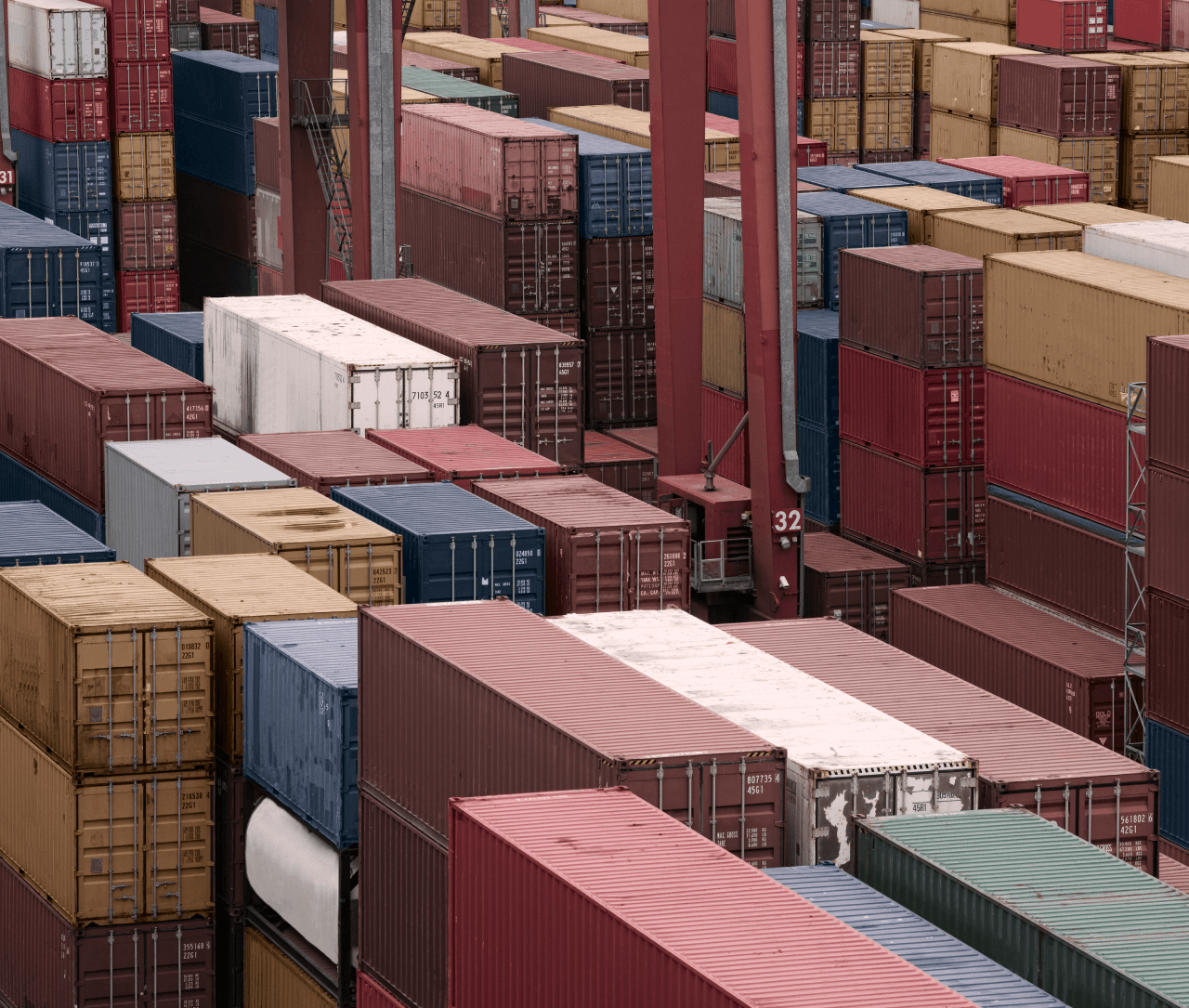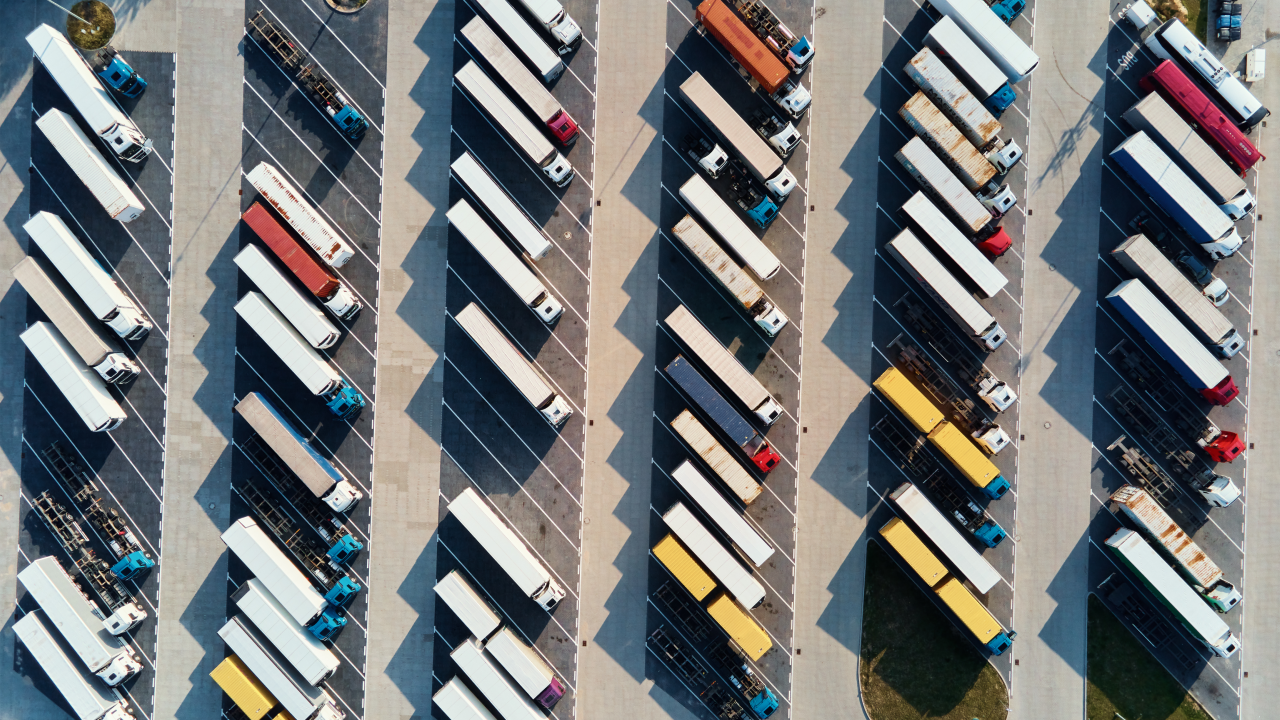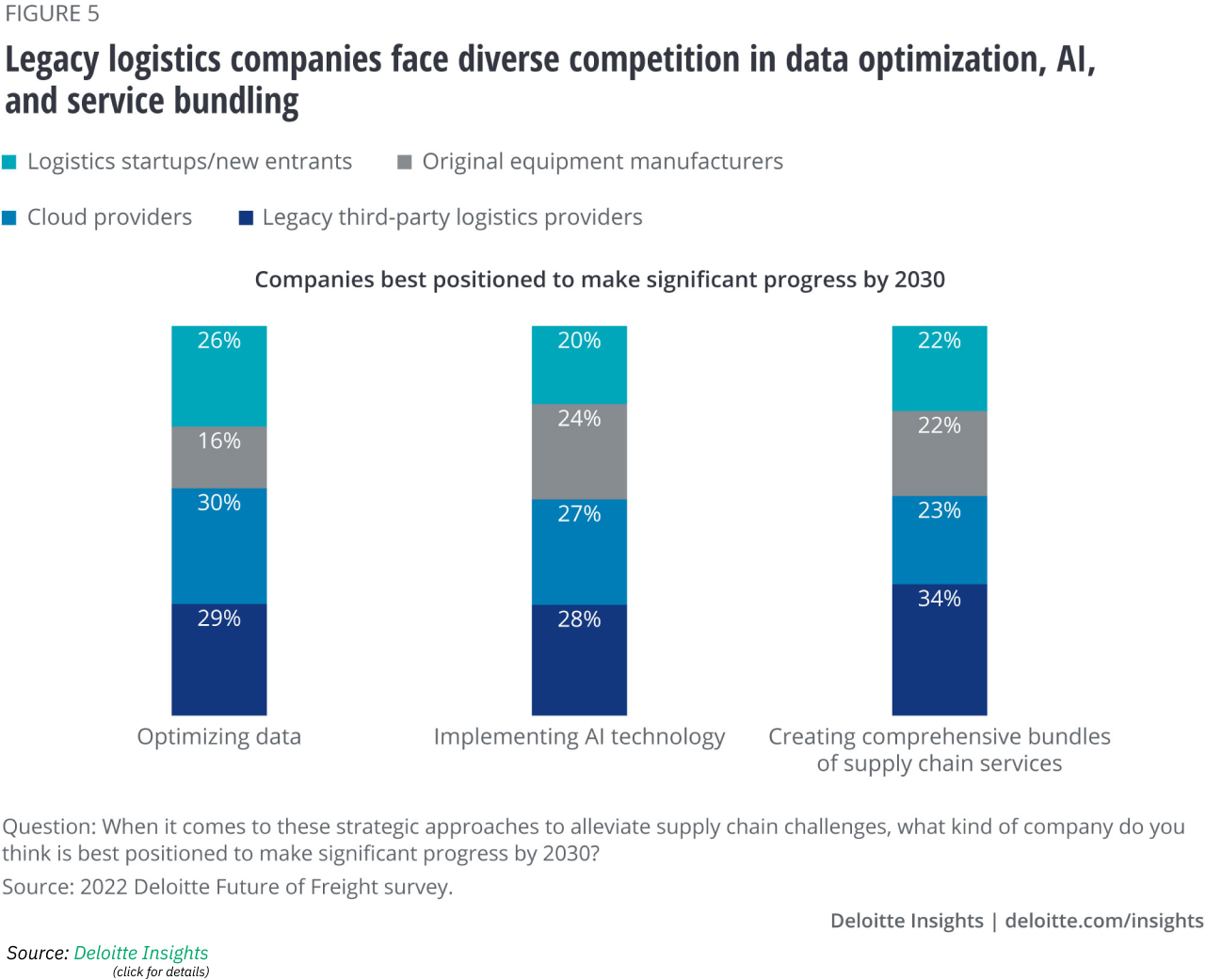
Current
18 Mar 2024
A look at the future of transport and logistics
Freight transport and logistics companies are undergoing a period of change to stay in line with the demands of today's customers in a fast-moving marketplace. Which means they're turning to technology - computers, the Internet and other digital tools - to improve the way they work, change the way they operate, how they interact with customers and how they run their businesses.
Leading companies such as DHL and UPS did this some time ago and have already shown how the use of digital technology can greatly improve the way they serve their customers and operate more efficiently, and set new standards for others to follow.
The COVID-19 pandemic has made it even clearer that businesses need to be able to change and adapt quickly, especially as supply chains (the systems that get products from where they're made to where they're sold) face many challenges. For example, the need for companies to be resilient and flexible is clearly seen in the rate of supply chain disruptions, which occur almost every four years.
Taking all these factors into account, we will look below at how consultancy services can help companies achieve digital change, focusing on technologies such as artificial intelligence (AI), automation, cloud computing and the Internet of Things (IoT) as key tools for making transport and logistics more efficient and customer-friendly.

The need for 'digital speed'
From wars in Ukraine and Israel to agricultural protests, high diesel prices and changing customer expectations (especially with the rise of online shopping), the transport and logistics sector is facing unprecedented challenges. As a result, it is vitally important for the sector to have systems in place that are capable of rapid adaptation and recovery.
Technology is playing a big role in changing the transportation and logistics industry. About half of the executives believe that in three years, advancements in data will help them better manage their assets and relationships with customers. Additionally, around 60% of companies are changing how they operate by outsourcing or buying other businesses to improve their skills in response to these industry changes. This shows a big move towards using digital tools to make supply chains more resilient and efficient.
McKinsey's research supports this, highlighting the need for continuous investment in logistics technology to stay competitive. This includes using the latest technologies for tracking shipments in real-time, planning better, and managing fleets more efficiently to tackle problems like high costs and not having enough workers. Using digital tools, like analytics and the Internet of Things (IoT), is key for improving how things run, being more environmentally friendly, keeping customers happy, and possibly increasing how much the company is worth and its revenue.
It's a time for companies to invest in technology, but more importantly - it's a time to rethink their business, operations and strategy. With the right mix of collaboration, accurate data and technology, companies can find entirely new approaches to solving their industry's problems. This, in turn, can lead to more efficient operations and better customer service. Given the speed at which things are changing, those companies that are best at incorporating and adapting to the use of digital technologies will lead the way in the future of how goods are moved and shipped.
Technology is changing transport and logistics
Leading companies among the Fortune 500 are ahead of the curve in integrating technology into their business strategies. With the right mix of digital innovations, these companies have the potential to increase their market value by as much as $1.25 trillion.
So, make sure you have a strategic plan for using technology that aligns with your overall goals, and be prepared to adapt your organisation to support these technology initiatives.
1. Find a mentor for the digital change
To improve efficiency and service quality, shipping and delivery companies have significantly increased their investment in new technologies since 2020. Around 87% of these companies are maintaining or increasing their technology budgets and expect to see a 20-40% improvement in their operations over the next two to four years.
That said, understanding how technology fits into your business can seem complex. That's where our digital consulting services come in. We can help you understand how technology fits into your business, and our digital consulting services provide comprehensive guidance on the effective use of technology, as demonstrated by our transformation of a state-owned postal service in Eastern Europe. This 1.5 year project not only doubled operational efficiency, but also led to a 60% reduction in security incidents, a 70% increase in online registration conversion rates and a 15% increase in revenue.
2. Improve business performance through Cloud Computing & AI
Businesses are increasingly turning to cloud computing and AI to improve their operations. This approach makes it easier to handle and analyze data in real time, leading to better decisions. For example, in transport and logistics, these technologies help optimize routes and predict demand, making operations more efficient. Here's what this means in simple terms:
Faster, Smarter Decisions: By managing data on the cloud, businesses can make quick, informed decisions. AI further refines this by analyzing trends, forecasting demand, and recommending actions, making decision-making both faster and more intelligent.
Ease of Scaling: Cloud computing enables businesses to scale rapidly, accommodating growth or demand spikes with ease. This flexibility was crucial during unexpected events, such as the COVID-19 pandemic, allowing for quick adjustments without the need for hefty hardware investments.
Innovation & Improvements: Cloud and AI technologies foster innovation, enabling businesses to enhance their services and products. AI-driven personalization and data analysis lead to better strategies and customer experiences.
Financial Benefits: Adopting cloud and AI technologies can lead to immediate performance improvements of 10-20%, with long-term potential enhancements of 20-40%. This strategic move can also decrease operational risks by 60% and increase company value by 20%.
3. More visibility and flexibility through Agile and IoT
Integrating Agile development with IoT (Internet of Things) technology offers transport and logistics businesses a significant edge in flexibility and innovation. This combination allows them to swiftly adapt to market shifts and new technologies, ensuring they stay competitive. Real-time data from IoT devices provides a clear view of the supply chain, facilitating better inventory management, cost reduction, and enhanced customer satisfaction. Here's a more straightforward breakdown:
Enhanced Visibility and Control: IoT devices deliver immediate data insights across the supply chain, improving inventory handling, minimizing losses, and enabling proactive logistical management. This leads to greater service quality, reduced costs, and improved agility, effectively minimizing digital waste and inefficiencies.
Increased Operational Efficiency: Agile methodologies enable quick adjustments to new demands or technological advancements. Incorporating digital tools like analytics, AI, robotics, and IoT streamlines information processing and decision-making. For instance, one industrial company saw a 20% inventory reduction and a 20-30% boost in planner productivity by embracing these technologies.
Better Customer Satisfaction: IoT enables precise tracking and forecasting, allowing businesses to keep customers informed about their orders. This not only builds trust but also enables companies to better align their services with customer needs through data-driven insights.
Cost Reduction: The synergy of Agile and IoT leads to considerable cost savings. Predictive maintenance, powered by IoT, can avert expensive equipment failures, while improved supply chain management lowers inventory expenses and waste.
Competitive Advantage: The economic potential of IoT is vast, with estimates suggesting a global value between $5.5 trillion to $12.6 trillion by 2030. Manufacturing's operation-management applications alone could contribute $0.5 trillion to $1.3 trillion of this value, highlighting the immense opportunity for securing a competitive advantage.
4. Connect with your customers easier via web & mobile technologies
Enhancing customer experiences through web and mobile technologies is key to driving customer satisfaction and business growth in service-oriented sectors. Companies with extensive digital offerings tend to receive better feedback from customers. Companies that invest in digital platforms often see positive outcomes, including a 15-20% increase in customer satisfaction, a 20 to 40% reduction in service costs, and a 20% rise in conversion rates and growth.
Better Online Services: Using the latest tech like React.js, Laravel, and Kotlin, companies can create websites and apps that make it super easy for customers to book services, track orders, and get support. This means customers can do everything they want quickly and without hassle.
Happier Customers: When customers find it easy and convenient to use a company's services, they're more likely to keep coming back. Happy customers are also more likely to tell their friends and family about their positive experiences, which can bring in more business.
More Sales: An easy-to-use website or app can help convince customers to choose your company over competitors. Plus, satisfied customers are more likely to spend more money on your services.
Savings on Support: By making information and services easy to access online, companies can reduce the number of customer support calls and emails they need to handle, which can save a lot of time and money.
Staying Ahead of the Competition: By focusing on creating a great online experience, businesses can stand out in a crowded market and keep their customers loyal in the long run.
5. Be ready for customer needs by modernizing your infrastructure with DevOps
Shifting your transport and logistics business to use cloud technology and DevOps practices can make a big difference. Your IT team can do more in less time, meaning they can handle 25 to 30% more work, while new products or services can be launched 50 to 75% faster, and over a 50% decrease in failure rates. These practices foster collaboration across IT, improve infrastructure agility, and support rapid innovation, significantly enhancing operational efficiency and competitiveness in a digital-first market.
Ability to Quickly Adjust Based on Demand: When things get busy, you can easily ramp up your IT resources without the need to invest in extra equipment that sits idle when demand drops.
Cost Savings: By using the cloud, you don't need to spend as much on the upkeep of physical servers and data centers. This not only saves money but also reduces the energy needed and the space for housing equipment.
More Reliable Services: Cloud technology makes your services more reliable. Even if there's a glitch, your data is safe because it's stored in multiple places. Plus, the setup ensures that your services are almost always up and running.
Work from Anywhere: Cloud services can be accessed from anywhere, so your team can work flexibly from any location. This also means your services are always available to your customers, no matter where they or your employees are.
6. Make data-driven decisions via Database Management
Making decisions based on data is essential in today's business world. Advanced database management tools, like PostgreSQL and MongoDB, allow companies to handle and analyze the large amounts of data they generate. This approach leads to smarter business strategies, with a Forbes report noting a 5-6% boost in productivity and profitability for data-driven companies.
Making Smarter Moves with Your Data: Imagine having a super detailed map that not only shows where everything is but also predicts where you'll need things tomorrow. That's what these databases can do with your data. They help you see patterns and make smart decisions about everything from where to send trucks to how much stock to keep on hand.
Keeping Your Shelves Just Right: Too much stuff in the warehouse costs you money, and not enough means unhappy customers. By understanding your data better, you can have just the right amount of stock, save money, and keep customers smiling.
Happy Customers, Every Time: When you know what your customers want before they even ask, you can provide better service, faster deliveries, and quick responses to their concerns. Happy customers are likely to stick around and recommend you to others.
Finding New Paths to Grow: Data can show you opportunities you might not see otherwise. Maybe there's a demand for what you offer in a place you've never thought about, or perhaps there's a new service you could start offering. The right data insights can lead you to these growth opportunities.
Running a Tight Ship: With all the insights from your data, you can spot where things are getting stuck or where you're spending too much. This helps you fix those issues, streamline your operations, and save money.

The future of transport and logistics
In short, the world of trucks, ships and planes - in fact, the whole transport and logistics scene - is changing. And it's all because of some really amazing technology going on behind the scenes. Think of it as having a super smart assistant that can predict traffic, tell you the best routes in real time, and even help keep your customers happy by letting them know exactly when their goods will arrive.
If you're in the transport and logistics business, now is the time to get on the digital train. Don't just keep pace, get ahead. You'll be setting up your business to be more efficient, cut costs and provide a first-class service to your customers by embracing things like cloud computing (which is just a fancy way of storing and accessing your data over the internet rather than on a computer or server) and AI (computers that can think and learn like humans).
Imagine being able to expand your business without the headache of buying more servers or worrying about whether your system can handle it. That's what moving to the cloud can do for you. And with AI, you can automate the boring stuff, like scheduling, so you can focus on the bigger picture.
The bottom line? Your business can really stand out by embracing these changes. It's about making your operations run smoother, your customers happier and, quite frankly, your life a little easier. Think of it as upgrading your business's engine - one that's smarter, faster and more efficient.
So if you want your business to thrive going forward, now is a good time to start getting tech savvy. It's not as complicated as it sounds, and the rewards can be huge - not just in saving money, but in making your business the go-to place for customers who want the best service available.
Share this article on:
Sign up for our newsletter
Be up-to-date with our latest news, in-depth insights, and privileged content.
Related articles

Technology
IT Consulting
Digital Transformation
Retail in 2024 is set for a technological leap, driven by the industry's need to respond to growing consumer demands. As market saturation, rising consumer expectations, globalisation, cost reduction, sustainability and regulatory compliance pressures increase, the need for retailers to become more technologically advanced has become even more apparent.
01 Mar 2024

Technology
News
2023 was a year of major technological advances around the world that not only offered hope for a better future but began to make it a reality. Technology has advanced significantly in areas such as AI, quantum computing, AR/VR and environmental technology.
27 Feb 2024
